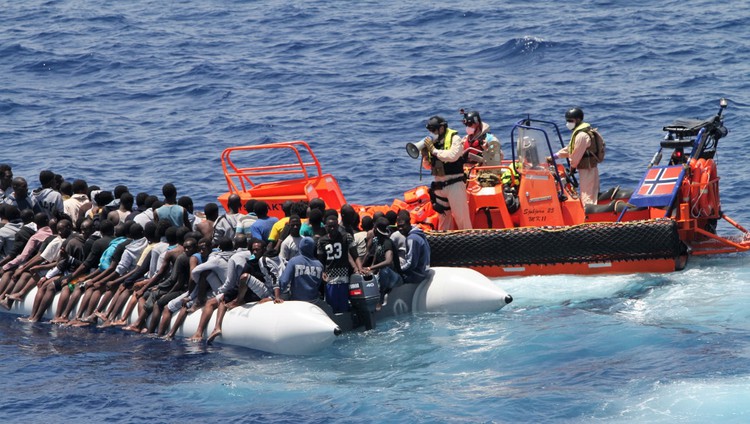The EU-Turkey agreement, coupled with stricter border policies applied by the former Yugoslav Republic of Macedonia at its border with Greece and the new NATO operation in the Aegean, led to a noticeable reduction in the number of migrants arriving on the Greek islands in March.
News
Number of migrants arriving in Greece dropped in March
2016-04-18

The total number of migrants detected crossing the EU’s external borders in the Eastern Mediterranean for the entire month of March reached 26 460, less than half the figure recorded in February.
In line with the EU/Turkey agreement decided by the European Council on 17/18 March, Greece said it would return to Turkey most of the migrants arriving on its islands after March 20. Some 3 500 migrants arrived in Greece in the last 11 days of March. This compares to 22 900 people who were detected illegally crossing the borders on the Greek islands and the rest of the Eastern Mediterranean route between March 1 and March 20.
Nevertheless, the number of detections in March 2016 was three times the number from a year ago.
“Even though weather conditions continue to play a part in the number of arrivals on the islands in the Aegean, the recent downward trend has continued into April. There have been fewer than 100 arrivals per day on average in the first half of this month,” said Frontex Executive Director Fabrice Leggeri.
“It’s early days yet, but initial indications are that thanks to the array of recent initiatives taken by the Commission, Greece, Turkey and the EU agencies, we have been able to improve control over our external borders and are beginning to manage the migratory flows better, in a more rational and fair manner,” Leggeri added.
In April, Frontex assisted Greece in transporting 325 migrants to Turkey.
Syrians, Afghans and Iraqis continued to make up for the largest share of the migrants coming to the Greek islands.
Western Balkans
After the former Yugoslav Republic of Macedonia significantly reduced the number of migrants it allowed to enter from Greece, the number of detections of illegal border crossings in March at EU’s external borders in the Western Balkans dropped by about 90% compared to the previous month. The March figure of 4 930 was also nearly 10% lower compared to the same month of 2015.
Central Mediterranean
Meanwhile, improved weather in the central Mediterranean region led to more than doubling of the number of migrants crossing the sea to Italy, when compared to February. The monthly total in March reached nearly 9 600, compared to 2 283 in the same month of 2015.
Nearly all detections on this route were of migrants from sub-Saharan Africa, mainly nationals of Nigeria, Somalia and Gambia. There have been no signs of a significant shift of migrants from other routes, especially the Eastern Mediterranean, to the Central Mediterranean.
The data presented refer to the number of detections of illegal border-crossing at the external borders of the European Union. The same person may attempt to cross the border irregularly several times in different locations at the external border.